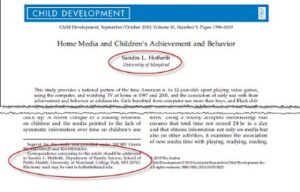Prudence is a key accounting concept that makes sure that assets and income are not overstated, and liabilities and expenses are not understated. Since the outcome of contingent liabilities cannot be known for certain, the probability of the occurrence of the contingent event is estimated and, if it is greater than 50%, then a liability and a corresponding expense are recorded. The recording of contingent liabilities prevents the understating of liabilities and expenses.
- These liabilities must be disclosed in the footnotes of the financial statements if either of the two criteria is true.
- The Standard thus aims to ensure that only genuine obligations are dealt with in the financial statements – planned future expenditure, even where authorised by the board of directors or equivalent governing body, is excluded from recognition.
- The contingent liability may arise and negatively impact the ability of the company to repay its debt.
- In all these situations, a past event has occurred that may give rise to liability depending on some future event.
Contingent liabilities do not include provisions for which it is certain that the entity has a present obligation that is more likely than not to lead to an outflow of cash or other economic resources, even though the amount or timing is uncertain. A contingent liability is a potential obligation that depends on the occurrence or non-occurrence of one or more events in the future. If the event occurs, the company may be required to make a payment; if it does not occur, the company will not be required to make a payment. An automobile guarantee or other product warranties are examples of contingent liabilities that, are usually recorded on a company’s books. The materiality principle states that all important financial information and matters need to be disclosed in the financial statements. An item is considered material if the knowledge of it could change the economic decision of users of the company’s financial statements.
AccountingTools
These types of contingencies usually include pending litigation and guarantees of indebtedness that exist when a company guarantees the collectability of a receivable that it has discounted at the bank. Contingent liabilities shall be material where information about the current or potential size or nature of those liabilities could influence the decision-making or judgement of the intended user of that information, including the supervisory Contingent Liability Definition authorities. Insurance and reinsurance undertakings shall recognise contingent liabilities, as defined in accordance with Article 9 of this Regulation, that are material, as liabilities. The articles and research support materials available on this site are educational and are not intended to be investment or tax advice. All such information is provided solely for convenience purposes only and all users thereof should be guided accordingly.
- Since the outcome of contingent liabilities cannot be known for certain, the probability of the occurrence of the contingent event is estimated and, if it is greater than 50%, then a liability and a corresponding expense are recorded.
- Often, the longer the span of time it takes for a contingent liability to be settled, the less likely that it will become an actual liability.
- The materiality principle states that all important financial information and matters need to be disclosed in the financial statements.
- Contingent liabilities are possible obligations whose existence will be confirmed by uncertain future events that are not wholly within the control of the entity.
- As a result of the company’s guarantee, the bank makes the loan to the supplier.
A contingent liability is not recognised in the statement of financial position. However, unless the possibility of an outflow of economic resources is remote, a contingent liability is disclosed in the notes. An entity recognises a provision if it is probable that an outflow of cash or other economic resources will be required to settle the provision.
IASB finalises amendments to IAS 37 regarding onerous contracts
You should also describe the liability in the footnotes that accompany the financial statements. The disclosure requirements for contingent liabilities are set forth in accounting standards. In general, companies must disclose the nature of the contingency and the expected timing and amount of any potential payments. Contingent liabilities https://kelleysbookkeeping.com/total-absorption-costing/ are possible obligations whose existence will be confirmed by uncertain future events that are not wholly within the control of the entity. An example is litigation against the entity when it is uncertain whether the entity has committed an act of wrongdoing and when it is not probable that settlement will be needed.

Our mission is to empower readers with the most factual and reliable financial information possible to help them make informed decisions for their individual needs. Finally, during 2019, the company incurred $35,000 of warranty expenditures related to these printers. Past experience indicates that Micro Printing will incur an average of $40 in repair expense for each printer sold. The matching convention requires the recording of the expense in the period of the sale, not when the repair is made. In April 2001 the International Accounting Standards Board adopted IAS 37 Provisions, Contingent Liabilities and Contingent Assets, which had originally been issued by the International Accounting Standards Committee in September 1998. That standard replaced parts of IAS 10 Contingencies and Events Occurring after the Balance Sheet Date that was issued in 1978 and that dealt with contingencies.
